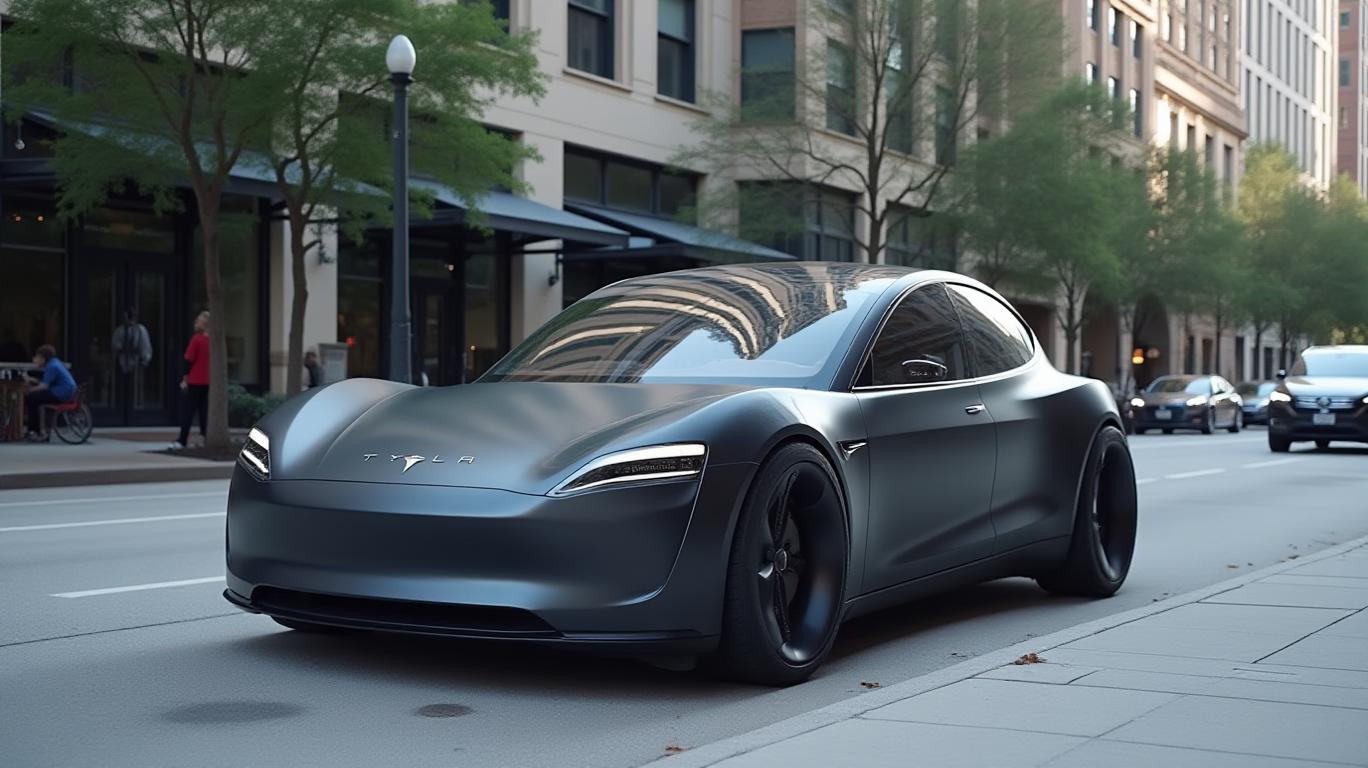Tesla’s Autonomous Ambition: Can Robotaxis Secure Dominance in Self-Driving?
Tesla’s upcoming robotaxi rollout in Austin, Texas—slated for June 2025—marks a pivotal moment in the race to dominate autonomous mobility. While the company faces regulatory scrutiny and technical skepticism, its aggressive timeline and pricing strategy could redefine the industry. For investors, the question is clear: Can
leverage its first-mover advantage to outpace rivals like Waymo, traditional automakers, and tech giants?The Cybercab and the Camera-Only Gamble
Tesla’s Cybercab, unveiled in October 2024, represents a bold bet on its Full Self-Driving (FSD) system—a camera-only approach that rejects lidar and radar used by competitors like Waymo. This decision reduces hardware costs but risks safety in challenging conditions such as heavy rain or direct sunlight. Yet, Tesla’s price target of under $30,000 for the Cybercab could undercut rivals: Waymo’s prototype vehicles reportedly cost over $100,000 due to lidar sensors.

Regulatory Leverage and Competitive Positioning
Tesla’s Austin launch benefits from Texas’ lax autonomous vehicle laws, allowing unsupervised operations without federal pre-approval. This contrasts sharply with California, where Tesla holds only a basic testing permit. By securing early regulatory wins in Texas, Tesla gains a de facto testbed to refine its software and scale operations. Meanwhile, Waymo’s partnership with Toyota emphasizes safety and sensor diversity but lags in cost efficiency—a critical edge for Tesla.
Traditional automakers like GM and Ford face a double threat: Tesla’s direct-to-consumer model bypasses dealerships, while its robotaxi service could disrupt ride-hailing giants like Uber. Tesla’s ecosystem integration—combining cars, energy storage, and software—creates a moat that standalone tech firms struggle to match.
Pricing Power: Cost Leadership or Costly Compromises?
Tesla’s $30,000 target hinges on mass production and software scalability. The Austin rollout’s initial 10–20 vehicles using Model Ys (not Cybercab prototypes) suggest a phased approach, prioritizing volume over perfection. If successful, Tesla could undercut competitors by eliminating driver costs entirely, offering rides at $0.10–$0.15 per mile—half the price of Uber’s average.
However, Tesla’s safety record looms large. NHTSA’s ongoing investigations into FSD-related accidents and its June 2025 deadline for compliance could trigger recalls or fines. Independent tests reveal FSD disengagements every 457 miles, far below industry standards. Can Tesla fix these flaws before scaling beyond Texas?
The Risks: Regulators, Rivals, and Reality
- Regulatory Hurdles: Expanding beyond Texas requires navigating stricter states like California. Tesla’s TCP permit there only allows employee shuttles, not public rides.
- Safety Scrutiny: Critics like the Dawn Project highlight Tesla’s reliance on low-res cameras and staged demos. NHTSA’s demands for transparency could expose vulnerabilities.
- Competitor Momentum: Waymo’s lidar-rich vehicles and Toyota’s manufacturing scale pose threats. Tesla’s camera-only system may struggle in global markets with complex urban environments.
The Opportunity: First-Mover Profits and Network Effects
If Tesla’s Austin service proves safe and scalable, it could:
1. Capture ride-hailing market share: Eliminating drivers reduces costs by 30–50%.
2. Leverage FSD’s data flywheel: More robotaxi miles improve software, attracting customers and investors.
3. Preempt regulatory frameworks: Texas’ success could pressure other states to follow suit.
Analysts project $10 billion in annual revenue by 2026 from robotaxis alone—a figure that could multiply if Tesla expands globally.
Conclusion: A High-Reward, High-Risk Bet
Tesla’s robotaxi rollout is a gamble. The company risks regulatory blowback, safety failures, and investor fatigue from missed deadlines. Yet, its cost leadership, ecosystem dominance, and first-mover advantage in Texas create a compelling moat against rivals. For investors willing to bet on Musk’s vision, Tesla’s autonomous push could deliver outsized returns—if the cameras don’t fog up first.
Act Now or Wait?
The window for early adoption is narrow. Tesla’s stock has surged on robotaxi optimism, but risks remain. For aggressive investors, Tesla’s autonomous play offers a rare chance to bet on a $1 trillion company in the making—if it can drive safely through the potholes ahead.

Comments
No comments yet